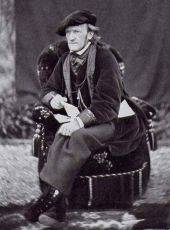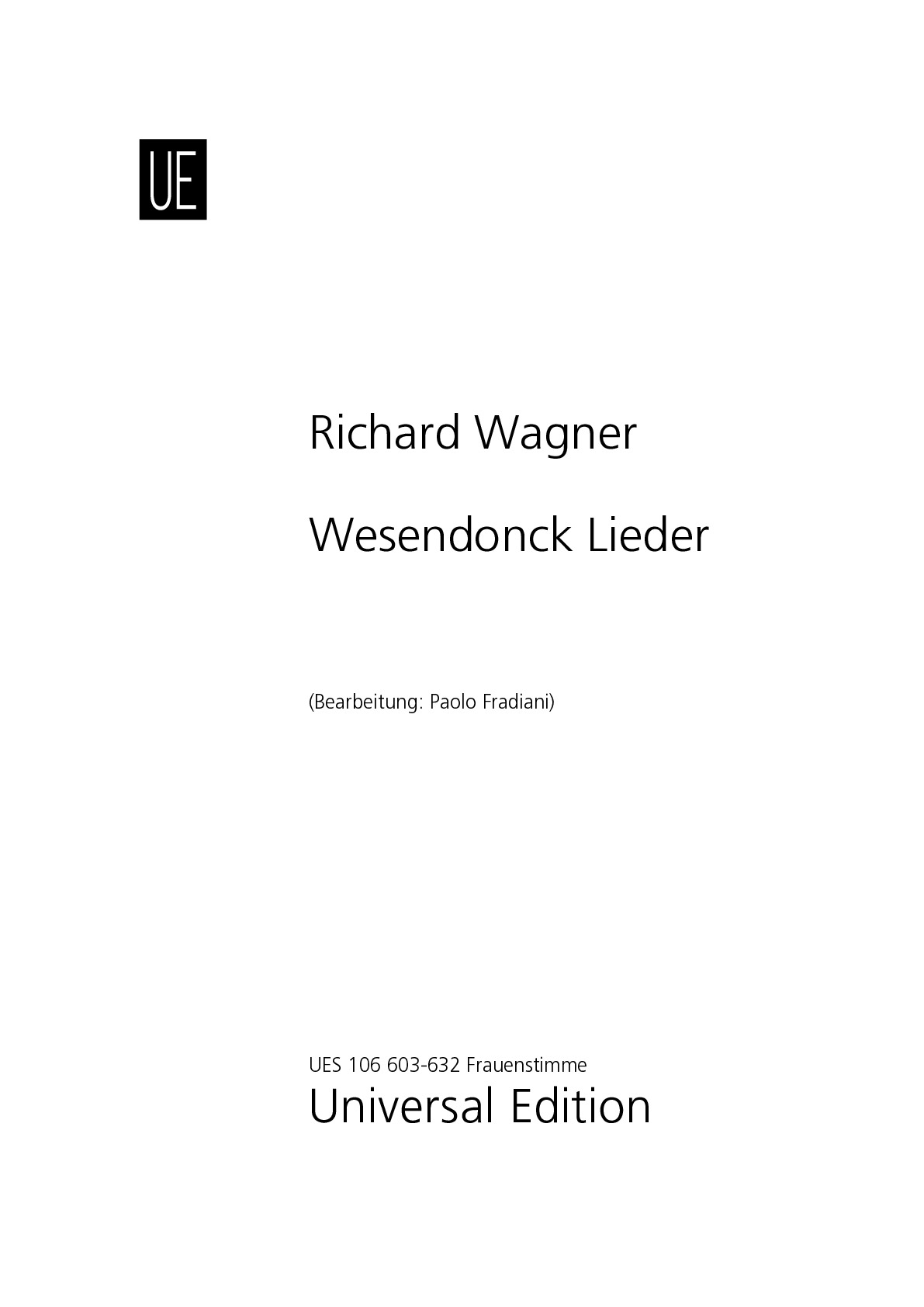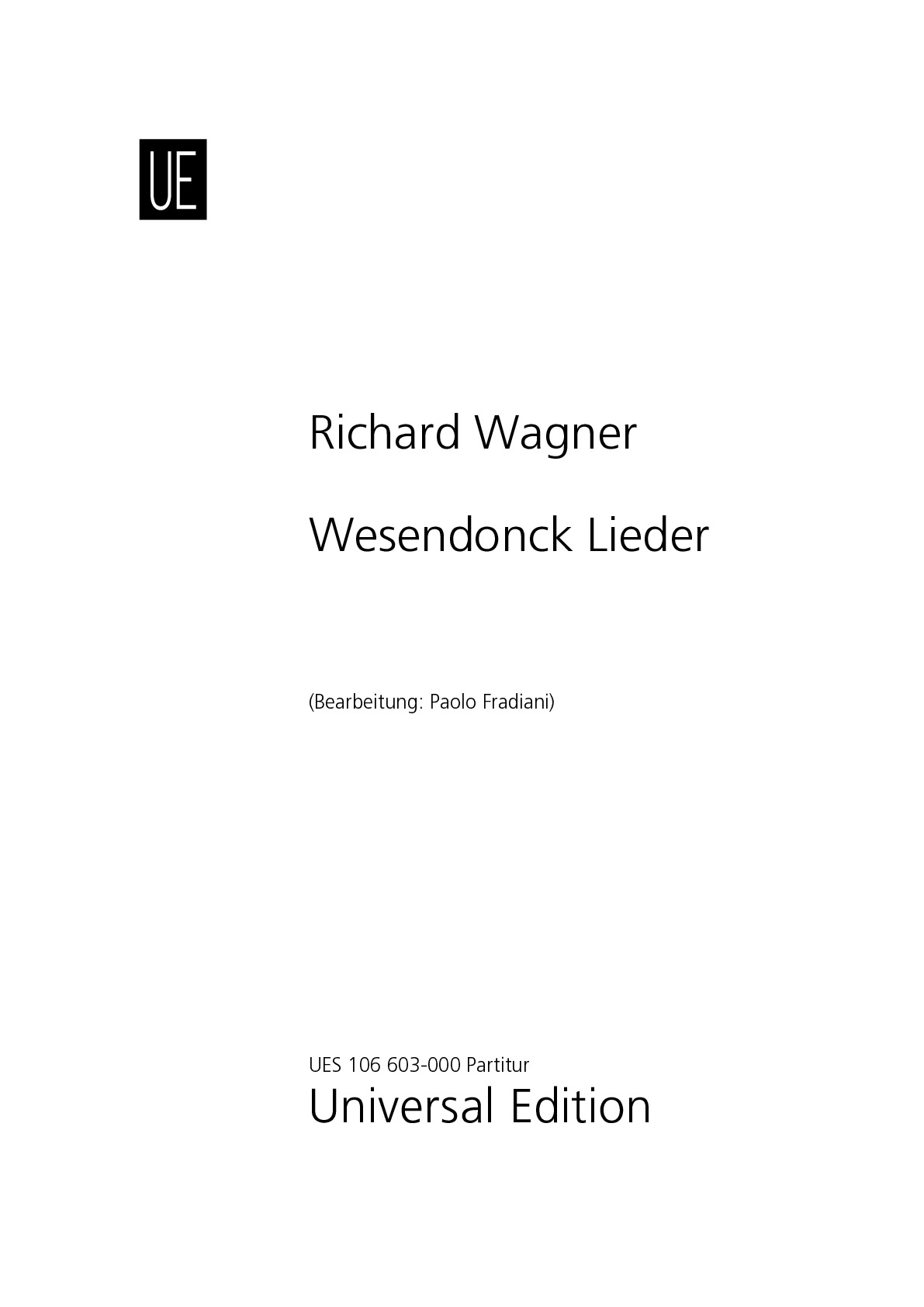

Richard Wagner
Wesendonck Lieder
Short instrumentation: 1 1 1 1 - 1 0 0 0, str
Duration: 23'
Bearbeitung: Paolo Fradiani
Solos:
female voice
Instrumentation details:
flute
oboe (+c.a)
clarinet in Bb
bassoon
horn in F
violin I
violin II
viola
violoncello
double bass
Wesendonck Lieder
Printed/Digital
Translation, reprints and more

Richard Wagner
Frauenstimme (Wesendonck Lieder)Type: Solostimme(n)

Sample pages
Work introduction
The songs are settings of poems by Mathilde Wesendonck, the wife of one of Richard Wagner's patrons. Wagner had become acquainted with Otto Wesendonck in Zürich, where he had fled on his escape from Saxony after the May Uprising in Dresden in 1849. For a time Wagner and his wife Minna lived together in the Asyl (German for Asylum in the sense of "sanctuary"), a small cottage on the Wesendonck estate. It is sometimes claimed that Wagner and Mathilde had a love affair; in any case, the situation and mutual infatuation certainly contributed to the intensity in the conception of Tristan und Isolde.
Wagner sold the settings to the publisher Schott in 1860 for 1000 francs. The first published version (1862) was titled Fünf Gedichte für eine Frauenstimme (Five poems for a female voice), and the first performance was given at the publisher's residence in Mainz, by the soprano Emilie Genast, accompanied by Hans von Bülow.[No name was given for the author of the texts at the first publication; it was not publicly revealed until after Mathilde's death (1902). The present order of the songs appears for the first time in the published version, and this has raised doubts as to whether the sequence is a genuine song cycle, or should be regarded simply as a collection of individual pieces
What is necessary to perform this work?
Minimum instrumentation requirements:
1 Flute
1 Oboe (also Cor Anglais)
1 Clarinet in Bb
1 Bassoon
1 Horn in F
1 Female Voice
2 Violins
1 Viola
1 Violoncello
1 Doublebass
